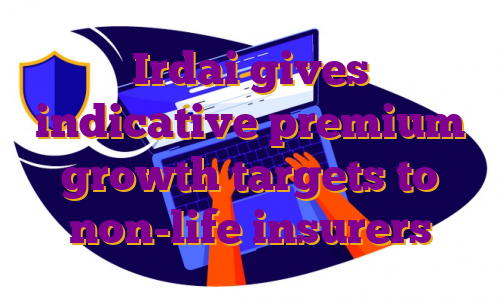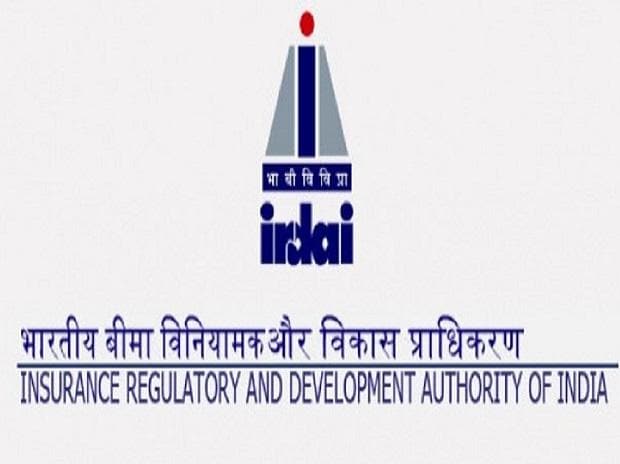The Insurance Regulatory and Development Authority of India (Irdai) has prescribed aspirational targets for non-life insurance industry, days after doing the same for life insurance companies. The aim is to increase the general insurance penetration to 2.52 per cent by FY27 from the current 1 per cent as of FY21, people aware of the development said. The regulator wants to increase the general insurance premiums to Rs 11.7 trillion by FY27 from Rs 2.2 trillion as of FY22. In FY22, the non-life insurance industry premiums grew by just 11 per cent over the previous year, data put out by the regulator showed. According to the Irdai’s annual report, as of FY21, non-life insurance penetration in the country is just 1 per cent (see box). Insurance penetration is measured as a percentage of GDP. “The regulator has a vision to see the general insurance market growing from Rs 2 trillion to over Rs 11 trillion, and as a result increase the general insurance penetration. To achieve this, they are looking at making a lot of regulatory changes. The regulator has given individual targets to companies based on their growth and various parameters. The only reason to prescribe targets is to increase penetration. The idea is that coverage should be improved substantially,” said a private sector general executive, who is aware of the development. Email sent to Irdai did not elicit a response till the time of going to press. All non-life insurance companies, including private sector general insurers, public sector general insurers, standalone health insurers, and specialised general PSU insurers, have been growth targets for the next five years. Large traditional non-life insurance companies such as ICICI Lombard, HDFC Ergo, Bajaj Allianz General, have been given premium growth targets of 40 per cent, 38 per cent, and 38 per cent, respectively, for the next five years. Some companies have got growth targets of over 100 per cent. While public sector insurers have been asked to increase their premiums by 25 per cent every year, private sector general insurers have been given a premium growth target of over 40 per cent every year. On the other hand, standalone health insurers have been given premium growth targets of over 48 per cent every year. “The aspirational targets are like a road map for companies as the regulator is seriously looking at increasing the penetration. In five years, the regulator is asking the sector to reach premiums worth Rs 12 trillion from Rs 2.2 trillion. They have also asked companies to own up certain states and districts and work towards increasing penetration in those places,” said another senior insurance executive aware of the development. These are aspirational targets so there will be no repercussions if the companies fail to achieve the target. There will be regular reviews on where the companies have reached, the person quoted above said. Earlier, Irdai had proposed premium growth targets over a five-year period for life insurance companies, in a bid to double insurance penetration in the country. In an e-mailed communication to MDs and CEOs of life insurance companies, the insurance regulator suggested a gross written premium (GWP) growth target for each insurer. For top-tier companies, it proposed a target of 30 per cent compound annual growth rate (CAGR) in GWP over five years and for smaller companies it suggested 50 per cent CAGR growth. In the last few months, Irdai has brought in a number of changes to ease the regulatory environment in which the companies operate. It has introduced “use & file” procedure for almost all non-life insurance products and some life insurance products. It has also reduced the capital that needs to be blocked in respect of certain products so that the freed up capital can be utilized in a better way to increase coverage. Low market penetration
- 1% Non-life insurance
- 3.2% life insurance
- 4.2% Overall insurance
Source: Irdai annual report for FY21
 Dear Reader,
Dear Reader,
Business Standard has always strived hard to provide up-to-date information and commentary on developments that are of interest to you and have wider political and economic implications for the country and the world. Your encouragement and constant feedback on how to improve our offering have only made our resolve and commitment to these ideals stronger. Even during these difficult times arising out of Covid-19, we continue to remain committed to keeping you informed and updated with credible news, authoritative views and incisive commentary on topical issues of relevance.
We, however, have a request.
As we battle the economic impact of the pandemic, we need your support even more, so that we can continue to offer you more quality content. Our subscription model has seen an encouraging response from many of you, who have subscribed to our online content. More subscription to our online content can only help us achieve the goals of offering you even better and more relevant content. We believe in free, fair and credible journalism. Your support through more subscriptions can help us practise the journalism to which we are committed.
Support quality journalism and subscribe to Business Standard.
Digital Editor
!function(f,b,e,v,n,t,s){if(f.fbq)return;n=f.fbq=function(){n.callMethod?n.callMethod.apply(n,arguments):n.queue.push(arguments)};if(!f._fbq)f._fbq=n;n.push=n;n.loaded=!0;n.version=’2.0′;n.queue=[];t=b.createElement(e);t.async=!0;t.src=v;s=b.getElementsByTagName(e)[0];s.parentNode.insertBefore(t,s)}(window,document,’script’,’https://connect.facebook.net/en_US/fbevents.js’);fbq(‘init’,’550264998751686′);fbq(‘track’,’PageView’); .










